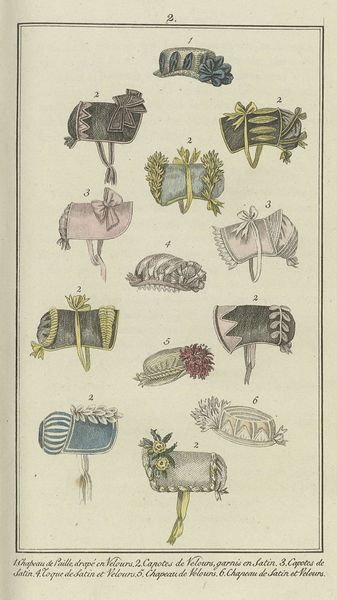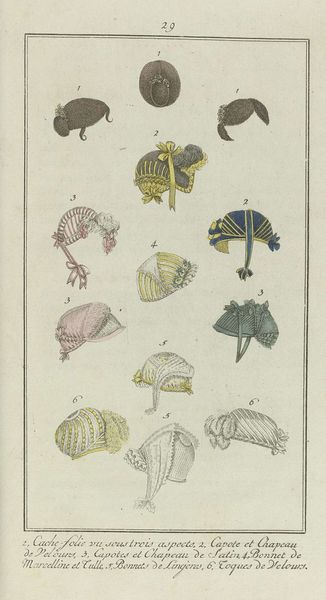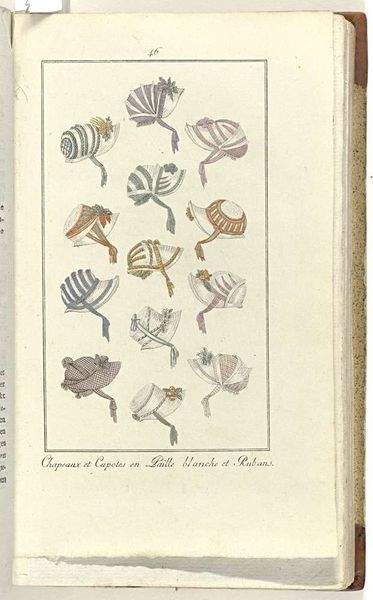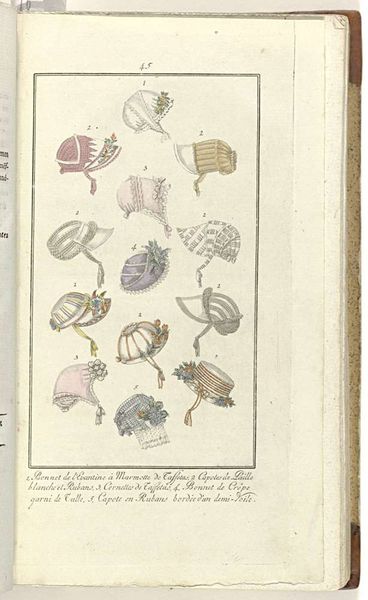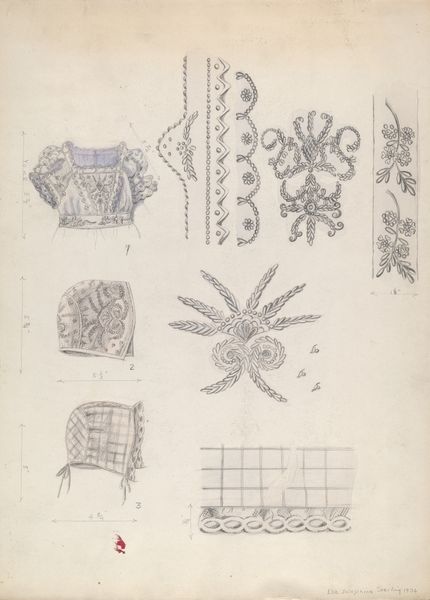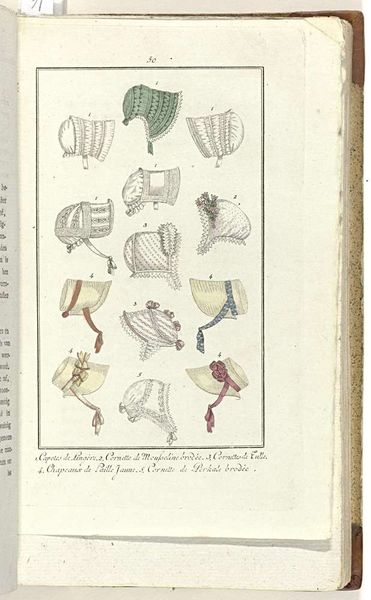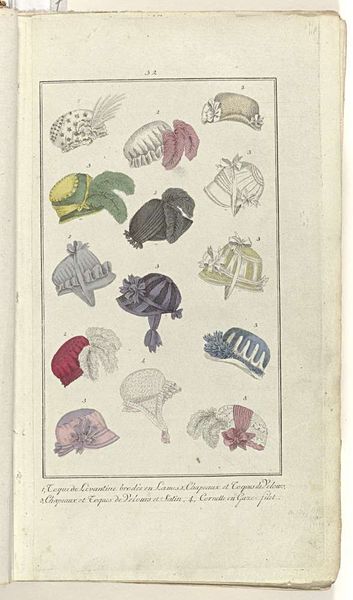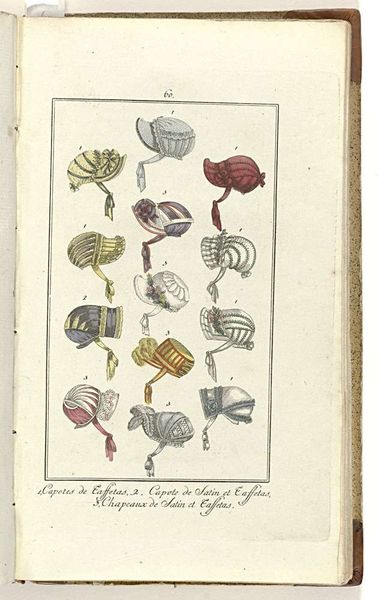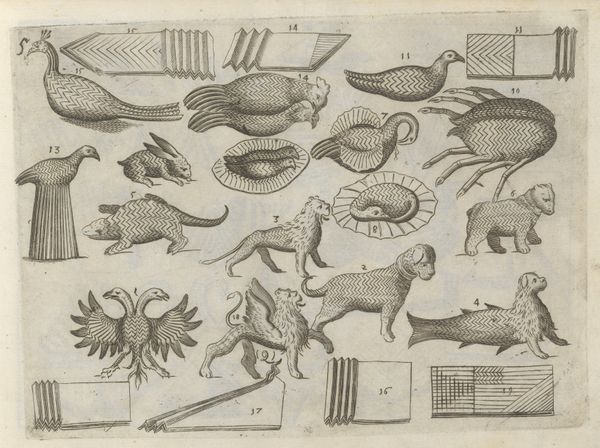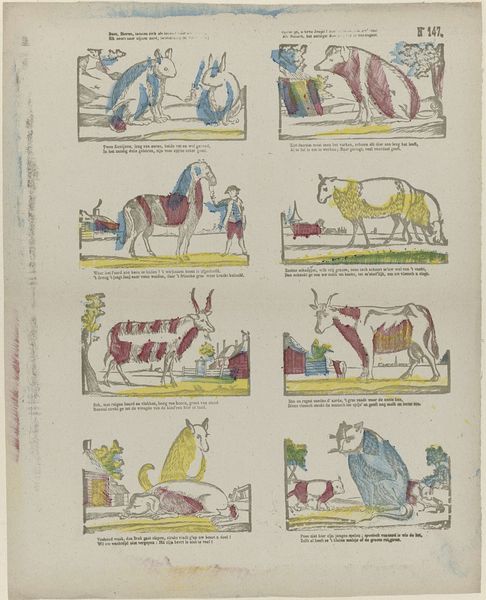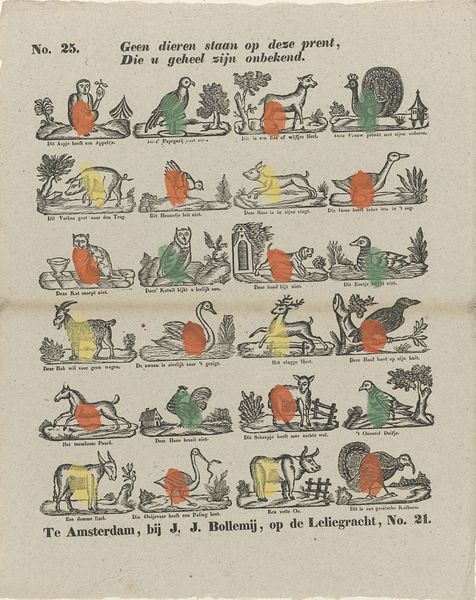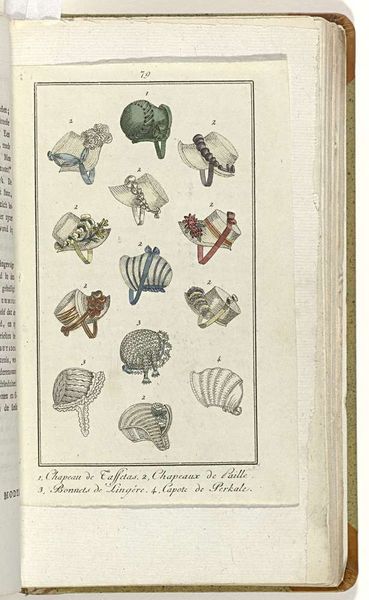
Elegantia, of tijdschrift van mode, luxe en smaak voor dames, Juli 1807, No. 16: 1. Chapeau et Capotes en Paille... 1807
0:00
0:00
drawing, print, etching, watercolor
#
drawing
# print
#
etching
#
watercolor
#
romanticism
#
watercolour illustration
#
decorative-art
Dimensions: height 175 mm, width 116 mm
Copyright: Rijks Museum: Open Domain
Editor: This is a fashion plate titled "Elegantia, of tijdschrift van mode, luxe en smaak voor dames, Juli 1807, No. 16: 1. Chapeau et Capotes en Paille..." created anonymously in 1807. It appears to be a print, etching, and watercolor drawing depicting different styles of women's hats. The colours are delicate and it's presented almost as a catalogue of desirable objects. What strikes you about this piece? Curator: As a materialist, I'm drawn to the explicit mentioning of the different textiles in the inscription, identifying chapeaux and capotes made of straw, percale, crepe, taffeta and silk. This illustrates how essential fabrics were not only to the finished product but also as status symbols within this social class. What can be understood by looking into how these hats were made, where did the materials come from, and who made them? Editor: That's fascinating! I hadn’t considered the implications of the materials themselves. So, you’re suggesting that the act of listing these materials highlights the emerging consumer culture? Curator: Precisely! This plate isn’t just about aesthetics; it's about the *process* of acquisition, the societal value placed on certain goods. The choice of materials -the weave of the straw, the dye in the silks- signifies participation in fashionable life. Consider the labor involved in the production of these objects, as well as their consumption. How were such trends disseminated, and what impact did they have on both makers and wearers? Editor: It’s like a snapshot of the textile industry and its connection to consumerism at that time. Curator: Indeed. By shifting the focus from mere style to the material reality, we uncover so much about the social and economic structures of the early 19th century. The plate serves as evidence of production chains and commercial relationships in that period. Editor: I see this plate now as much more than pretty hats! I’m now wondering about where the straw was sourced and the labor involved in shaping those delicate bonnets. Curator: Exactly! Seeing beyond the immediate image helps understand the culture behind it.
Comments
No comments
Be the first to comment and join the conversation on the ultimate creative platform.
